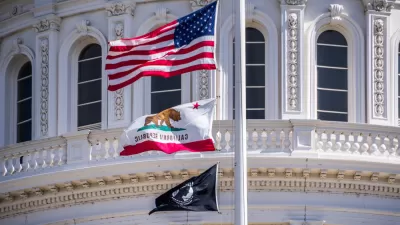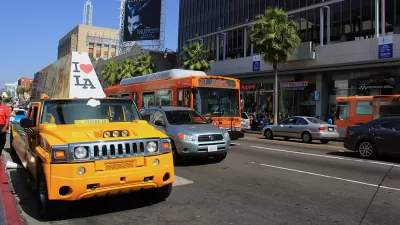According to new figures from California's Annual Planning Survey, the state's environmental law is low on the list of barriers to infill development, writes Ethan Elkind.
California's landmark Environmental Quality Act (CEQA) has been under threat of late from a broad coalition of politicians, labor leaders, and developers, who see the law as an easily abused obstacle to economic development. However, as Elkind points out, according to the results of the Governor's Office of Planning and Research's 2012 annual survey [PDF] of California's local governments, those looking to blame CEQA for preventing infill development should look elsewhere.
"Of the 423 cities (88% of all cities) and 49 counties (84% of all
counties) responding to the survey, less than 5% cited CEQA as the
primary barrier to infill development. Instead, the big 'winners' were
infrastructure constraints, lot issues, lack of funding, community
opposition, and the economy, among others. CEQA was way down on the list."
"So why do infill developers make such a big deal about CEQA?" asks Elkind. "My [Elkind's] theory
is that individual developers will be focused solely on their own
projects, and if CEQA is a threat to their investment and risk-taking,
they will understandably become CEQA haters. But perhaps this
project-based focus distorts the view of the larger forces that stifle
infill business opportunities throughout the state, such as in the
suburb with the major rail line that won't zone for more downtown
development or the rundown neighborhood near jobs and services that
needs new infrastructure."
"Ending CEQA tomorrow won't magically lift
these barriers and create new infill opportunities, and it won't
convince local communities to support new downtown development."
FULL STORY: Why Developers Shouldn’t Blame Environmental Review for the Lack of Infill

Alabama: Trump Terminates Settlements for Black Communities Harmed By Raw Sewage
Trump deemed the landmark civil rights agreement “illegal DEI and environmental justice policy.”

Planetizen Federal Action Tracker
A weekly monitor of how Trump’s orders and actions are impacting planners and planning in America.

Why Should We Subsidize Public Transportation?
Many public transit agencies face financial stress due to rising costs, declining fare revenue, and declining subsidies. Transit advocates must provide a strong business case for increasing public transit funding.

How Housing as a Financial Product Harms Communities
Institutional buyers who treat housing as an investment product become disconnected from the impacts of higher rents, displacement, and housing instability.

Blinded by the Light: When Brighter Headlights Decrease Safety
Bright LED headlights can create glare and reduce visibility for other drivers and pedestrians.

Study Links Covid and Poor Driving
The effects of the virus, including ‘brain fog,’ can make driving more difficult and dangerous.
Urban Design for Planners 1: Software Tools
This six-course series explores essential urban design concepts using open source software and equips planners with the tools they need to participate fully in the urban design process.
Planning for Universal Design
Learn the tools for implementing Universal Design in planning regulations.
Caltrans
Smith Gee Studio
Institute for Housing and Urban Development Studies (IHS)
City of Grandview
Harvard GSD Executive Education
Toledo-Lucas County Plan Commissions
Salt Lake City
NYU Wagner Graduate School of Public Service





























